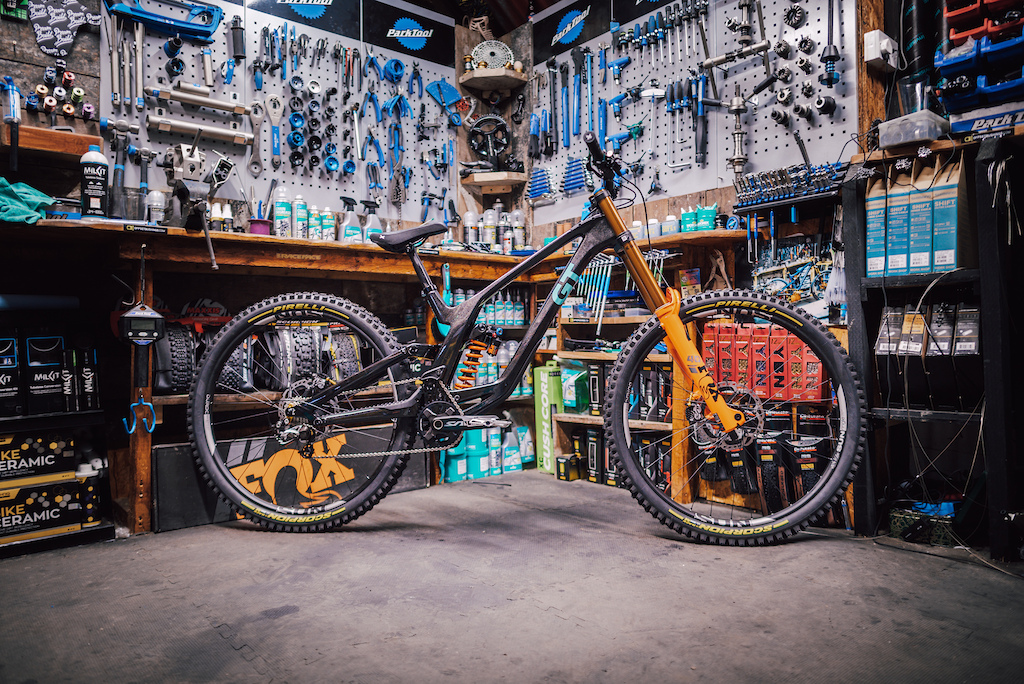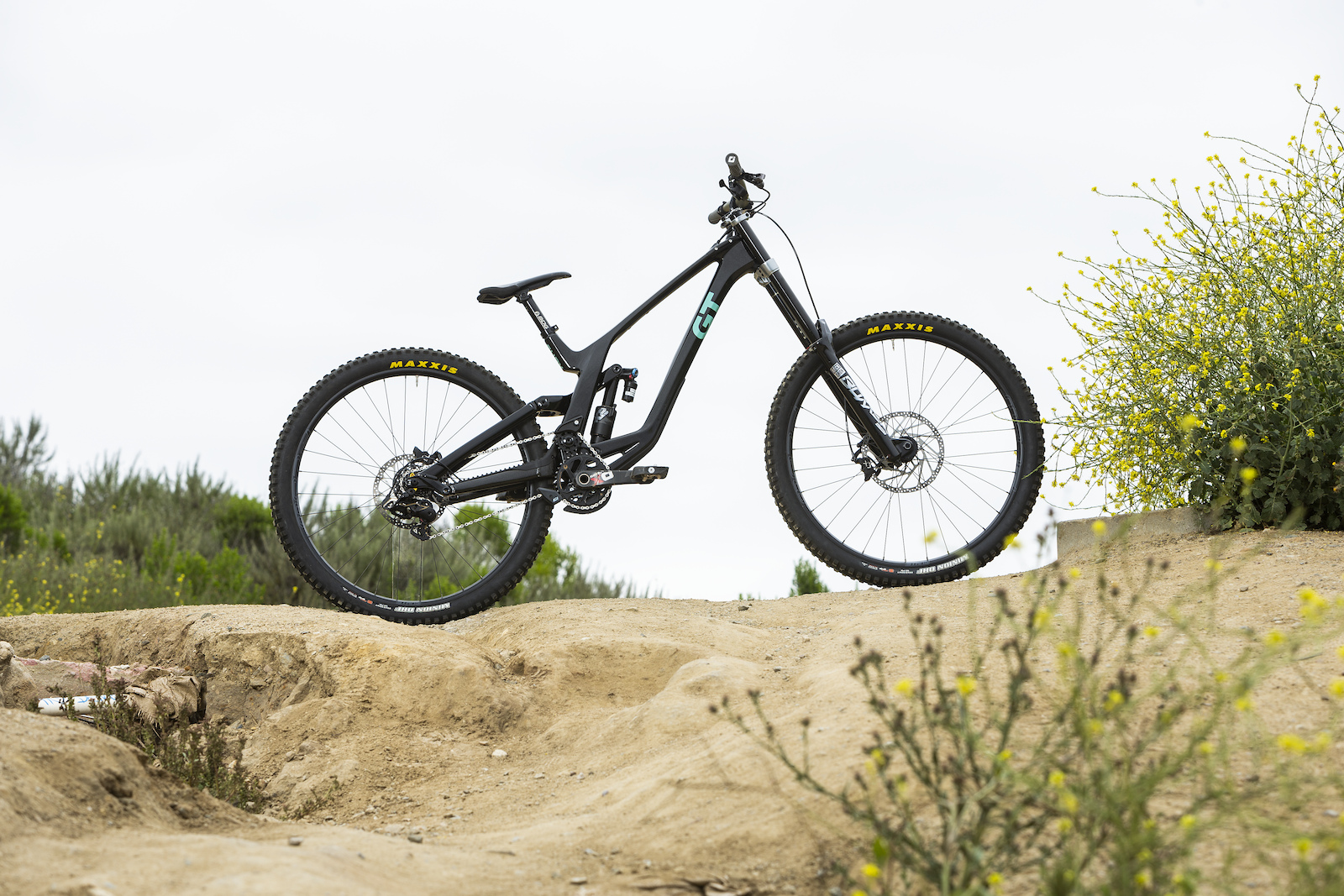
GT has integrated more adjustment into the Fury frame, allowing the geometry and suspension performance to be tweaked by the end user to best suit their needs and ride style.
• Carbon front triangle, Alloy rear
• Travel: 200mm 29″, 210mm 27.5″
• 29″ or ‘MX’ wheel size
• 63.5° head tube angle
• 450 to 510mm reach
• +/- 10mm chainstay adjustment
• Sizes: M, L, XL
• Weight: 4300g (size L w/o shock)
• Price: $2,600 USD / $3,500 CAD / £3,000
• gtbicycles.com
We’ve been seeing glimpses of this new bike for a while now, but it’s finally time to dig into the details and see all that has changed.
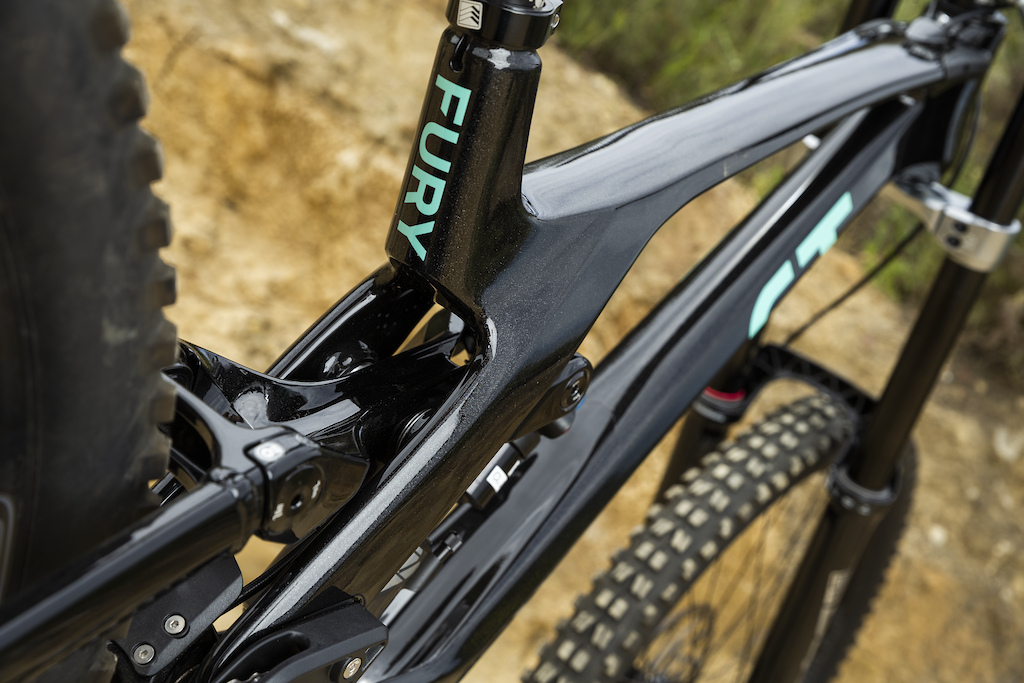
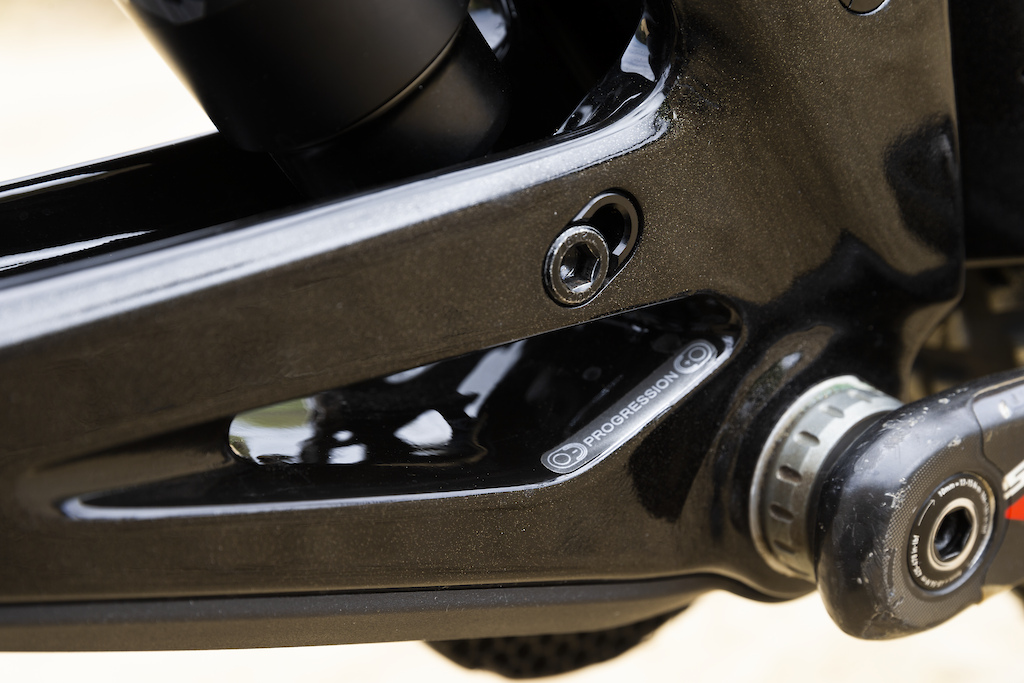
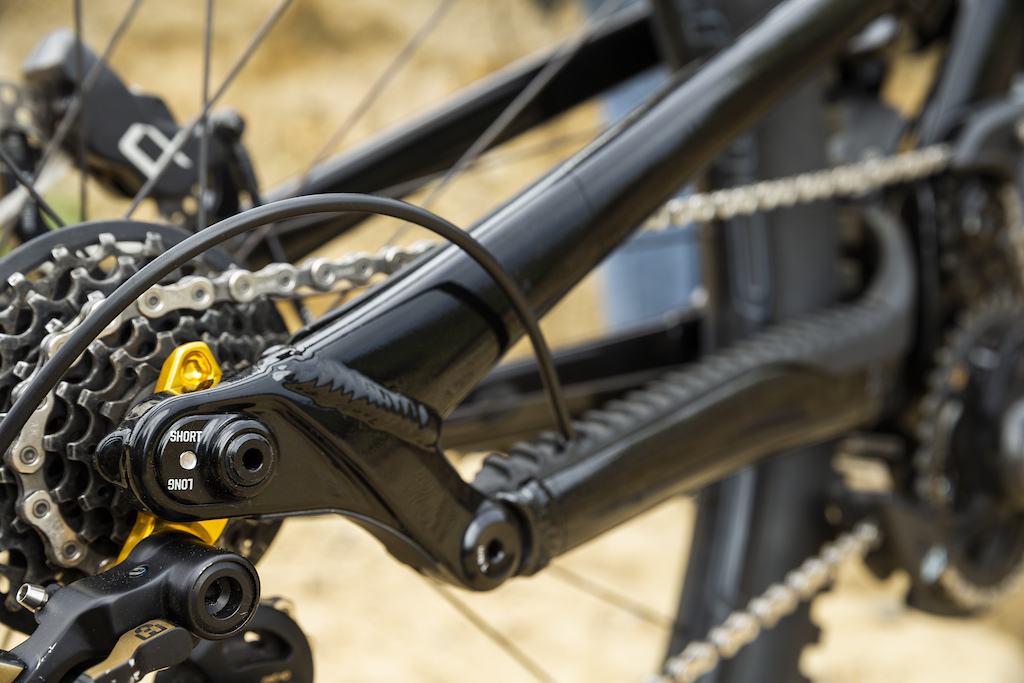
Frame Details
Adjustments are few, but significant, all depending on 3 flip chips baked into the Fury’s frame. You can choose between full 29″ wheels or the ‘MX’ setup via a chip at the junction between the seatstays and the rocker link. At the lower shock mount, there’s another flip chip, allowing you to run the bike with a more progressive or linear kinematic, to suit rider preference and track characteristics. The final chip adjusts the effective chainstay length, swapping from 440 to 450mm in the 29″ setting and 435 to 445mm in the 27.5″ setting. Between all these options, there’s more than enough to play with, and I’m sure we’ll see riders and racers tweaking their Fury geometry and setup to eke out the fastest times on track.
Reworking the layup of the carbon front triangle shaved about 300g off the total weight, resulting in a 4300g frame without the shock. GT made sure to locate as much of the frame weight as low as possible on the chassis, in order to lower the center of gravity and hopefully improve stability. Should you want to counteract that lowered weight bias a bit, GT now includes a bottle cage style mount on the underside of the top tube, allowing you to strap a small toolkit or cute accessory to the frame.
Both the rear brake and shifter housing are routed internally through the frame, snaking from the front to the rear triangle around the rocker link tunnel to keep the lines as straight as possible. They enter the frame on top of the headtube, giving the routing a very unique look.
GT has stuck to some sensible standards with the Fury frame, implementing a threaded 83mm bottom bracket, a 1.5″ headtube, and using a somewhat atypical Boost 12×148 rear end – a nice detail if you’re keen to share a wheelset between your pedal bike and the DH machine. The frame has ISCG05 mounts for bashguards, and is set up to run a trunnion shock.
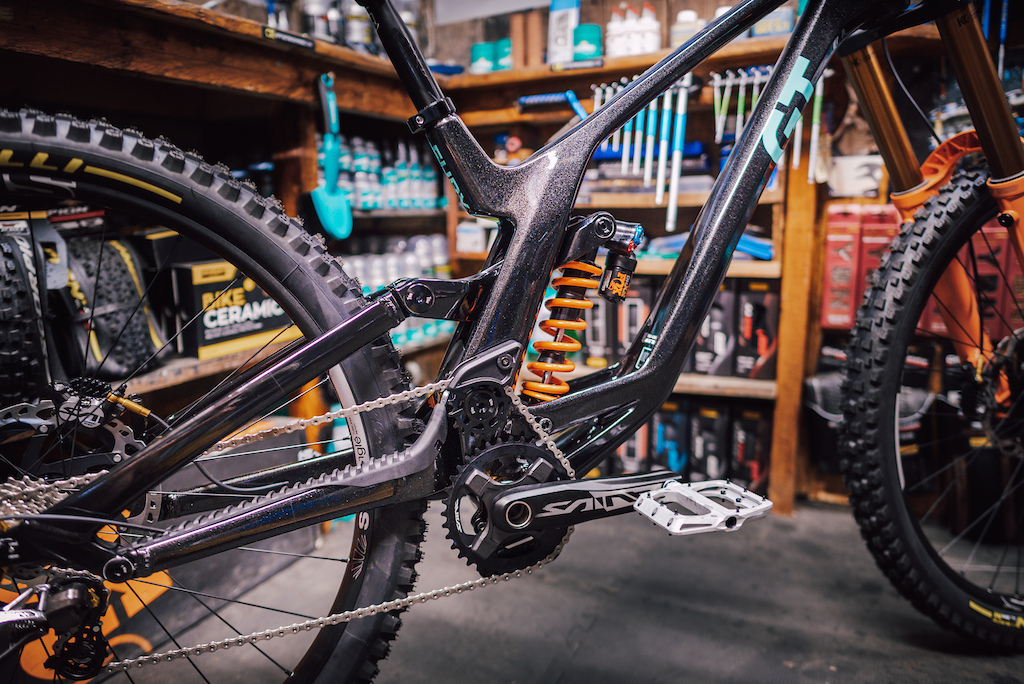
Suspension Design
GT stuck with their High-Pivot LTS suspension system that was used in the prior Fury, but with plenty of tweaks and improvements to make the bike faster and more predictable. They’ve also integrated a flip chip into the lower shock mount, giving one the ability to change the progression of the suspension.

The Fury frame comes with a 225x75mm RockShox SuperDeluxe Coil Ultimate DH RC2 shock, which will provide either 200 or 210mm of travel, depending on whether you have the rear end in the 29″ or 27.5″ setting.
The engineers at GT have increased the anti-rise on the new bike, which should make the braking feel more consistent and stable throughout the travel. Anti-squat has also gone up a bit to improve sprinting performance, with the idler mitigating any increased pedal kick that might occur.
Geometry
The hard points of the Fury got a whole host of updates for the 2023 bike, a few of which can be changed by use of the flip chips on the chainstays and seatstays. You’ll notice right off the bat that sizing has changed somewhat, with GT adding the XL frame size and deleting the Small. Within the Medium and Large sizes that have carried through, reach numbers have grown by about 5-10mm, depending on the settings. Stack heights have also grown quite a bit, which should give a more confident riding position as well as the ability to tweak the fit for steeper and trickier terrain.
Chainstays have been stretched out a bit on the new Fury, with the ability to adjust that length by 10mm. In 29″ mode, you can opt between 440 and 450mm, the latter of which should give a very stable and lengthy wheelbase. With a small rear wheel, your choices are 435 or 445mm, to either accentuate the nimble handling of the MX setup, or to keep things racy while gaining some butt clearance.
The last detail worth noting – and quite an unusual one considering the trends of the past few years – is the head tube angle. It’s actually gotten steeper on the new Fury, moving from 62° to 63.5°. The thought here is that this complements the growth in reach, and provides more confidence in turns and tighter sections of track. I tend to agree, but we’ll see how it shakes out on trail. Luckily, if that’s too steep for you, the 1.5″ head tube plays nicely with a whole host of angle adjust headsets.
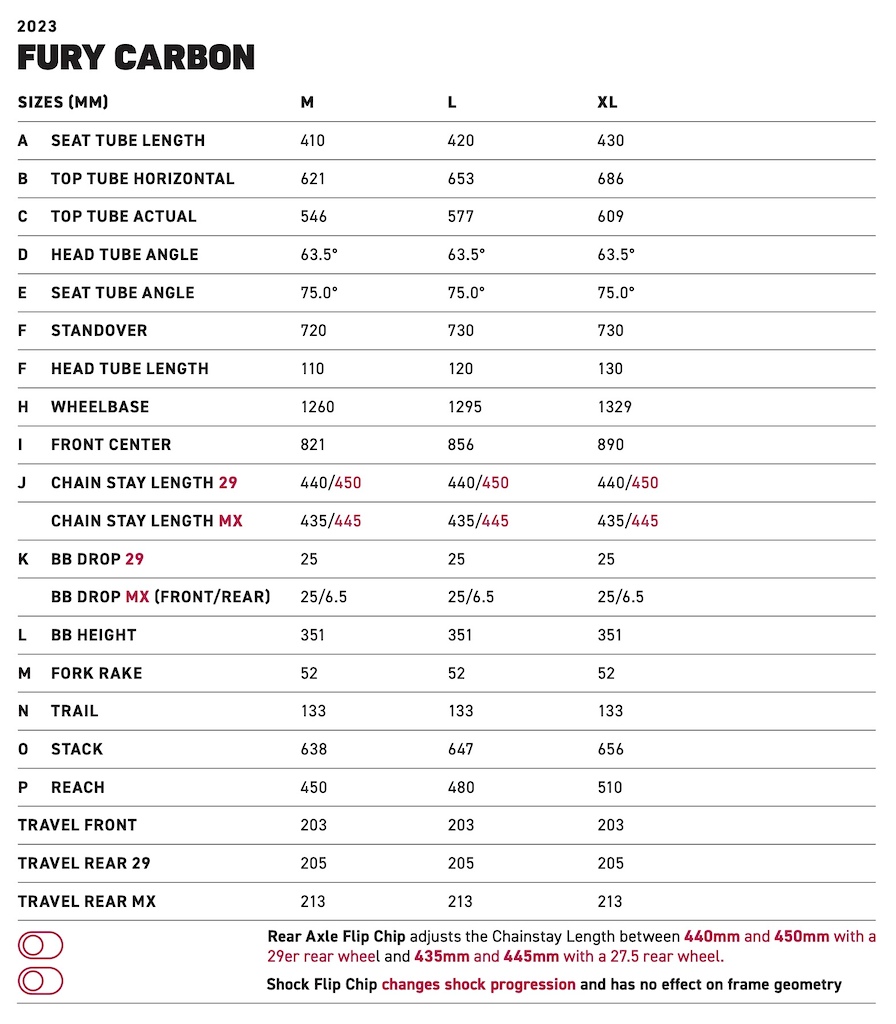
Specs and Pricing

The options here are pretty slim, with one color and one frame offering for the time being. Coming in at $2,600 USD, you get the Fury frameset, a RockShox SuperDeluxe Coil Ultimate shock, an FSA headset, and an open ticket to build the bike up however you might wish. Sparkly but subdued, the colorway for the current frame is called Gloss Galaxy and Black with Sea Green.
Later this summer, GT will be launching two all-new complete models, so stay tuned if that’s more your speed.
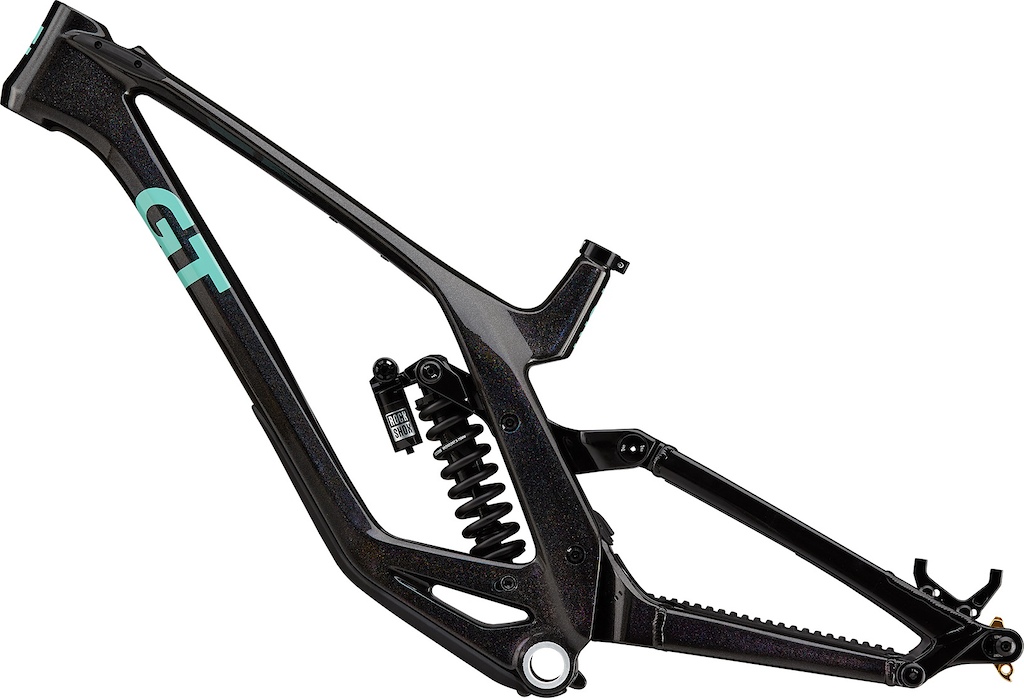

It’s also worth noting that the new Fury will be the official bike of one of the coolest programs in downhill racing this year: GT’s Privateer Project, brought about by Wyn Masters. At each round of the World Cup, a the fastest privateer from the previous race will be treated to full support at that round, as well as a complete bike built up just like Wyn’s. As DH gets more professional and pro teams bring more support to the races, programs like this make all the difference for people trying to break into the top of the sport.
